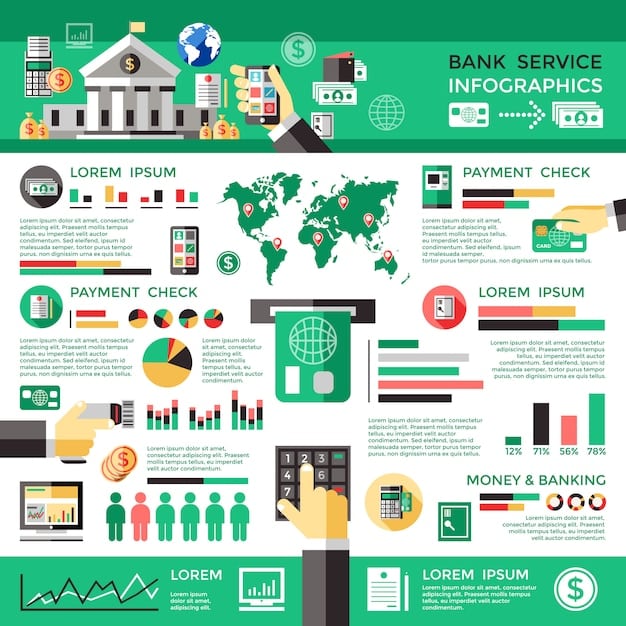How to Leverage Government Incentives for Business Growth in 2025

Leveraging government incentives in 2025 can significantly boost business growth by reducing costs, fostering innovation, and expanding operations, provided businesses strategically identify and apply for available programs.
Are you looking to propel your business forward in 2025? One often overlooked avenue for significant growth is through government incentives. Understanding how to leverage government incentives for business growth in 2025 can provide a crucial competitive edge.
Understanding the Landscape of Government Incentives in 2025
Navigating the world of government incentives can seem daunting, but a clear understanding of the landscape is the first step. These incentives are designed to stimulate economic activity, support specific industries, and encourage innovation. By familiarizing yourself with the different types of incentives available, you can identify those that align with your business goals.
Government incentives in 2025 encompass a wide range of programs, including tax credits, grants, loans, and subsidies. Each program has its own eligibility requirements, application process, and terms. It’s crucial to research and understand these details carefully to maximize your chances of success.
Types of Incentives Available
Several types of government incentives are typically available to businesses. Understanding these differences is key to identifying the best options for your company.
- Tax Credits: These reduce your overall tax liability, offering a direct financial benefit.
- Grants: Grants provide funding for specific projects or initiatives, often focused on innovation or community development.
- Loans: Government-backed loans can offer favorable interest rates and terms, making it easier to access capital.
- Subsidies: Subsidies provide financial assistance to help cover specific operating costs.
Many of these programs are targeted at specific industries, such as renewable energy, manufacturing, or technology. Others prioritize businesses that create jobs or invest in underserved communities.

Knowing which industries or initiatives the government is currently prioritizing can help you tailor your applications to increase your chances of approval. For example, in 2025, there might be a particular focus on incentives related to sustainable practices or advanced manufacturing.
In conclusion, a good starting point is to research the available grants and loans to understand their requirements, what support they offer, and how the business can receive money.
Identifying Incentives Relevant to Your Business
The next step is to identify the specific incentives that are most relevant to your business. While several might seem appealing, focusing on those that directly support your strategic goals will yield the best results. Start by assessing your business needs and priorities.
What are your biggest challenges and opportunities for growth? Are you looking to expand your operations, invest in research and development, or hire new employees? Identifying your priorities will help you narrow down the list of potential incentives.
Utilizing Online Resources
Several online resources can help you identify relevant government incentives.
- Grants.gov: This website is a central repository for federal grant opportunities.
- Small Business Administration (SBA): The SBA offers resources and programs for small businesses, including information on government incentives.
- State and Local Government Websites: Don’t forget to check the websites of your state and local governments for additional incentive programs.
Use these websites to search for programs that match your industry, size, and location. Pay close attention to the eligibility requirements and application deadlines.
Conducting a thorough needs assessment and utilizing online resources will enable you to create a shortlist of incentives that are a good fit for your business. This targeted approach will save you time and effort in the long run.
To conclude this section, use government websites to check the latest opportunities, ensure that deadlines are met and applications have maximum impact.
Navigating the Application Process
Applying for government incentives can be a complex process, but careful planning and attention to detail can increase your chances of success. Start by thoroughly reviewing the application guidelines. Understand what information you need to provide and how the applications should be formatted.
Many applications require detailed business plans, financial statements, and project proposals. Gather this information well in advance of the deadline to avoid rushing at the last minute. It’s also a good idea to contact the program administrators to ask any questions you may have.
Key Elements of a Successful Application
There are several elements that contribute to a strong application.
- Clear and Concise Writing: Ensure your application is easy to understand and free of jargon.
- Strong Business Plan: Demonstrate a clear strategy for achieving your goals.
- Financial Projections: Provide realistic financial projections to show the potential impact of the incentive.
Highlight your strengths and demonstrate how the incentive will help you create jobs, stimulate economic activity, or contribute to the greater good. Remember, the goal is to convince the reviewers that your business is a worthy investment.
Prepare a draft, and proofread every element of your application before submitting it. Small errors can create a negative impression and undermine your chances of success.
In conclusion, a focused and complete application is an important part of the process as it will impact your chances of success.

Building Relationships with Government Agencies
Building relationships with government agencies can provide valuable insights and support throughout the application process. Attend industry events and workshops to network with agency representatives. These events are a great way to learn about upcoming incentive programs and connect with key decision-makers.
Consider reaching out to agency representatives directly to introduce your business and learn more about their priorities. These conversations can help you tailor your application to align with their goals and increase your chances of approval.
Benefits of Building Relationships
Building relationships with government agencies can offer several benefits.
- Access to Information: Gain access to insider information about upcoming programs and changes in eligibility requirements.
- Guidance and Support: Receive personalized guidance and support throughout the application process.
- Networking Opportunities: Connect with other businesses and organizations in your industry
Remember that building relationships takes time and effort. Be proactive and persistent in your outreach efforts, and always be respectful of agency representatives’ time and expertise.
Relationships can create access to better support, improve the application and provide the business with a better chance.
Measuring the Impact of Government Incentives
Once you’ve secured a government incentive, it’s important to measure its impact on your business. This will help you demonstrate the value of the program to the government and inform your future incentive strategies. Define clear metrics for measuring success. Do you plan to evaluate how well you have used the incentive?
These metrics might include revenue growth, job creation, or investment in research and development. Collect data regularly and track your progress against these metrics. It’s also a good idea to solicit feedback from employees, customers, and other stakeholders.
Reporting Requirements
Most government incentive programs have specific reporting requirements.
- Financial Reports: Provide regular financial reports to track how the funds are being used.
- Progress Reports: Submit progress reports to demonstrate progress towards your goals.
- Impact Assessments: Conduct impact assessments to measure the overall impact of the program.
Be sure to comply with all reporting requirements to avoid penalties or losing the incentive. Use of government incentives have to be properly managed and reported back
In conclusion, tracking reporting requirements is essential. These reports are crucial if businesses are to continue receiving government aid.
Staying Ahead of the Curve in 2025
The landscape of government incentives is constantly evolving, so it’s important to stay informed about the latest developments. Changes to government policy and spending priorities can impact the availability and eligibility requirements of various incentive programs. In 2025, the digital transformation of government services is likely to continue. Therefore, a strategic review has its advantages.
Keep up-to-date with the latest news and trends in your industry and the government sector. Subscribe to industry newsletters, attend conferences, and follow relevant government agencies on social media. This will help you anticipate changes and adjust your incentive strategies accordingly.
Adapting to Changing Priorities
Businesses needs to be dynamic and constantly change to meet society’s need. This can be seen with the changing priorities and government policies.
- Sustainability: Many governments are prioritizing incentives for businesses that adopt sustainable practices.
- Technology: Incentives for businesses that invest in new technologies, such as artificial intelligence and blockchain, are becoming increasingly common.
- Innovation: Governments are always looking for businesses that are pushing the boundaries of innovation.
By staying informed and adapting to changing priorities, you can position your business to take advantage of the latest government incentives and achieve sustainable growth in 2025 and beyond.
In conclusion, awareness, strategic planning and understanding of what influences business initiatives is fundamental to moving onwards.
| Key Point | Brief Description |
|---|---|
| 💰 Tax Credits in 2025 | Reduce your tax obligations, freeing up capital. |
| 🚀 Innovation Grants | Fund your R&D, propelling technology growth. |
| 🤝 Agency Relations | Develop trust and knowledge to improve the process. |
| 📊 Impact Measuring | Essential to ensure government schemes continue to deliver value. |
Frequently Asked Questions
▼
Tax credits, grants, loans, and subsidies are most common. Grants target innovation and development, reduce tax and support specific operations.
▼
Use Grants.gov, SBA resources, state and local government websites to search for programs. Remember to search by industry, size, and location.
▼
A clear plan, concise writing, and strong business strategy, demonstrate a solid vision to the investors. Accurate financial projections also play an important role.
▼
Building relationships opens the possibility of support, guidance, and personalized information. Always approach these relationships with the relevant courtesy.
▼
Measuring the impact makes the business compliant and provides continued support for a successful future. It also builds trust with investors.
Conclusion
Leveraging government incentives can be a game-changer for businesses seeking growth in 2025. By understanding the landscape, identifying relevant programs, navigating the application process, building relationships, and measuring impact, you can unlock new opportunities and achieve sustainable long-term success.





